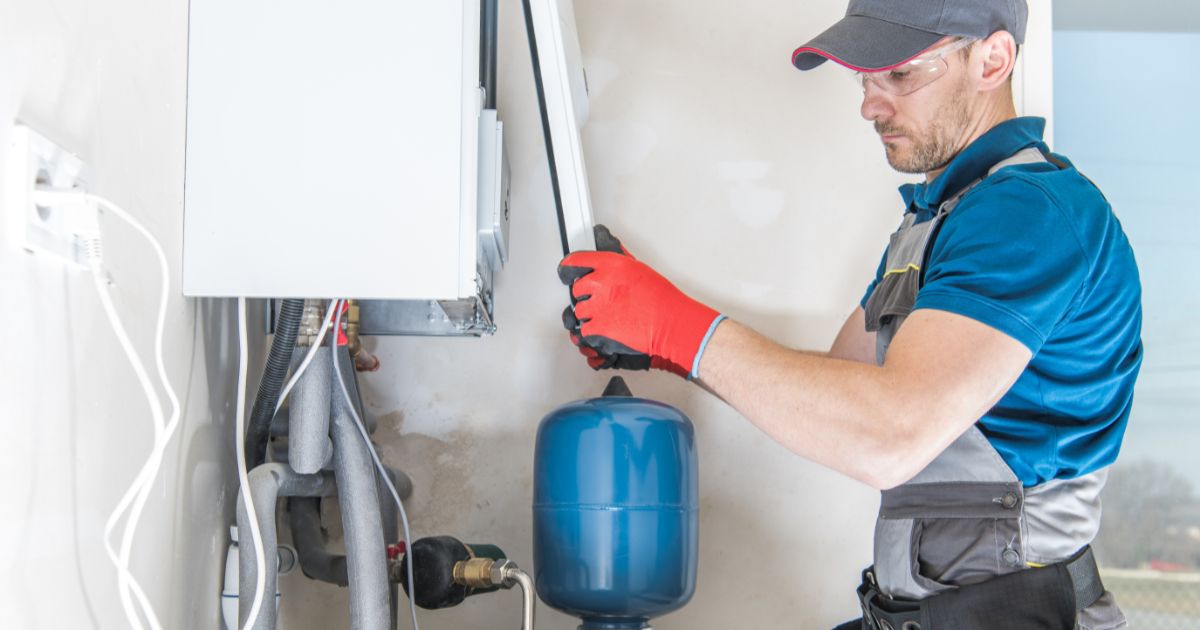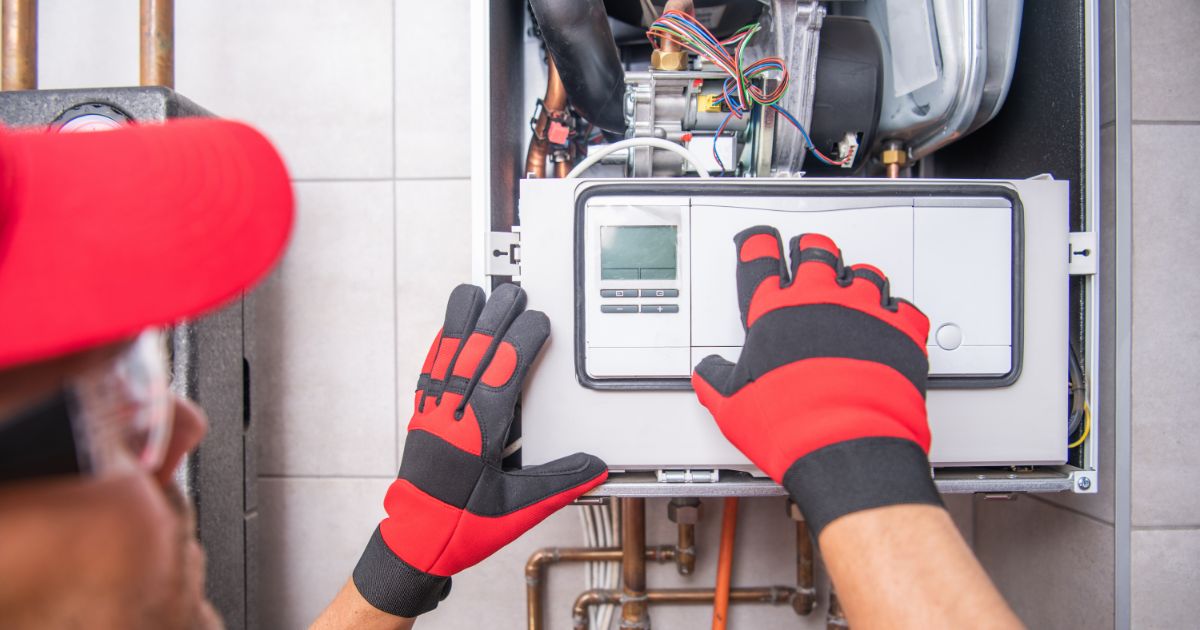Tankless water heaters are one of a household’s most versatile and energy-efficient options. Unlike conventional tank water heaters, a tankless unit won’t store and heat cold water. Instead, it only operates and heats water when you need it to help cut down energy and save money.
Though tankless heaters are more durable than traditional ones, they still require a maintenance routine for efficient functionality. Whether you do it yourself or hire professionals, cleaning tankless heaters should be an important task in your yearly calendars. You can use undiluted vinegar and flush kits to clean your tankless water heater.
This post will discuss how to clean a tankless water heater and the importance of maintenance to give you a better understanding.
Importance of Tankless Water Heater Maintenance
Cleaning your water heater is an essential maintenance task, whether traditional or tankless. Gunk and mineral buildup of magnesium, calcium, and other sediment affect the efficiency of gas units. Your tankless heaters won’t explode, but you could face other costly problems.
Mineral buildup can also result in unpleasant noises and affect the heat exchanger. These things combined can increase your energy bills or decrease the functionality of water heater units if you don’t properly clean them.
Water heaters are an investment. A minimal effort and routine maintenance from your side can increase efficiency and prolong the life of your tankless units.
When Should You Clean Tankless Heater Units?
You should clean your tankless water heaters once every year for smooth operation. However, water quality also determines how often you should clean the tankless units.
If your home has a hard water supply, the cleaning time frame should be twice a year. That’s because hard water can store mineral deposits and gunk more quickly.
How to Clean a Tankless Water Heater (Gas): Step-by-Step Guide

Though the cleaning and flushing process may seem lengthy and difficult, the process is fairly easy. You can ditch the need for professional cleaners and conveniently flush the units yourself. All you need is proper knowledge and the right set of tools.
Water heater manufacturers give detailed instructions in user manuals on how to clean, flush, and descale the units.
You can also opt for water heater cleaning kits, which are readily available on the market. These kits include everything from hoses to buckets to chemical cleaning agents and descaling solution circulation pumps!
Here’s a detailed and step-by-step guide to cleaning your tankless water heater. You can follow these instructions with or without a water heater cleaning kit.
Things You Will Need:
- Water hoses
- A bucket for mixing water and cleaning agent
- Circulation or submersible pump to circulate chemical solutions in the heater
- Cleaning solution
- Descaling agent
- Pliers to open and tighten the valves
- Fresh water to flush out the cleaning solutions
Step 1: Preparation
Before cleaning, turn off the isolation valves connected to your tankless water heater. Make sure to turn off both hot and cold water valves. You must also turn off the gas valve connected to your water heater. Following this step will ensure your and the heater’s safety during the cleaning process.
Step 2: Connect the Hoses
Now that your tankless heater is prepared for maintenance, it’s time to connect the water hoses to the inlet and outlet valves. If you are not using a cleaning kit, garden hoses or washing machine hoses will do the job. Make sure to use pliers to connect the hoses and valves tightly. This step will prevent the water from leaking in between the cleaning process.
Step 3: Attach the Inlet Hose to the Submersible Pump
A submersible or circulation pump will help the fluid circulate through your tankless unit. Connect the discharge side of the circulation pump to the free end of the cold water inlet hose. Make sure to tighten the hose. Also, place the circulation/submersible pump in a water bucket. The bucket should have one gallon of water.
Step 4: Set the Hot Water Hose
Take the end of the hot water hose and place it inside the bucket. This way, you will have a closed cleaning loop system for chemical agents to clean the mineral buildup.
Step 5: Add Chemical Agents

This step is the most important. Since cleaning and descaling, agents can irritate exposed skin, make sure to use gloves before adding the chemical solution to the bucket.
Pure white vinegar will also work if you don’t have a cleaning or descaling solution. However, you must use at least two to three gallons of vinegar for the best results.
Step 6: Circulate the Mixture
Now, open the water valves, plug the circulation pump, and let the chemical mixture circulate through the tankless heater for 40 to 45 minutes. If you are cleaning with vinegar, try to run the solution for 60 to 90 minutes. Vinegar does not include any powerful chemicals, so it takes longer to flush out the minerals and gunk.
Step 7: Flush Out the Mixture
Once the cycle is complete, unplug the circulation pump and stop the flow of the chemical solution. Turn off the two valves and loosen the drain hose with the help of pliers. Now that the cold water inlet is open, flush your tankless gas heater with fresh water.
Keep flushing the heater for five to ten minutes to ensure no chemical agent or vinegar is left inside. If possible, perform a pH test to check the quality of the water.
Step 8: Finish Up
That’s it! Now you just need to reconnect everything. Close the isolation valve and turn on the two water and gas supply valves. Your tankless water heater is now ready to give you the perfect steaming hot water for your showers.
FAQ
Should you DIY tankless water heater cleaning or hire a professional?
You can conveniently DIY the process with the right tools and steps. Different tankless heater cleaning kits are available with detailed instructions to assist you. However, if you are not confident enough and have never worked with tools and chemical agents, it’s better to seek professional help.
They can be expensive, but you will only hire professionals once a year. So the yearly cost may be somewhat affordable.
What is the difference between tankless and tank water heaters?
There are two types of water heaters – tankless and conventional tank water heaters. The only difference between the two types is that storage tank models continuously operate, heat, and store the water. In contrast, tankless models don’t store water. They operate and heat water only when required.
Does the tankless water heater warranty cover mineral content damage?
No, warranties do not cover any damage or functionality issues caused by mineral buildup.
What happens if you don’t flush a tankless water heater?
If you don’t flush your tankless water heater, it can accumulate mineral deposits and clog the unit.
The minerals and sediment in your water will cause the water to heat unevenly and fluctuate in temperature. This inconsistency can lead to problems like cold water during a shower or scalding hot water.
Final Words
Tankless gas water heaters provide convenience, but often we forget to clean them. Neglecting proper maintenance can lead to mineral buildups, noisy functioning, and other issues with the heater. To keep them running like new, proper cleaning is necessary.
Now you know how to clean a tankless water heater. If you follow the steps mentioned above, the cleaning process will be a breeze. Spending one or two days a year on maintenance can prevent functionality risks.
Hey, I’m Adam Miller. After years of crawling through cramped basements fixing water heaters (and discovering some pretty questionable DIY attempts), I figured it was time to share what I’ve learned in a way that doesn’t involve me getting covered in dust. I started this site to help you make sense of the whole tankless water heater thing—whether you’re tired of cold showers or just want to save a few bucks on your energy bill. I like to keep things simple, practical, and if I can throw in a bad joke or two along the way, even better!